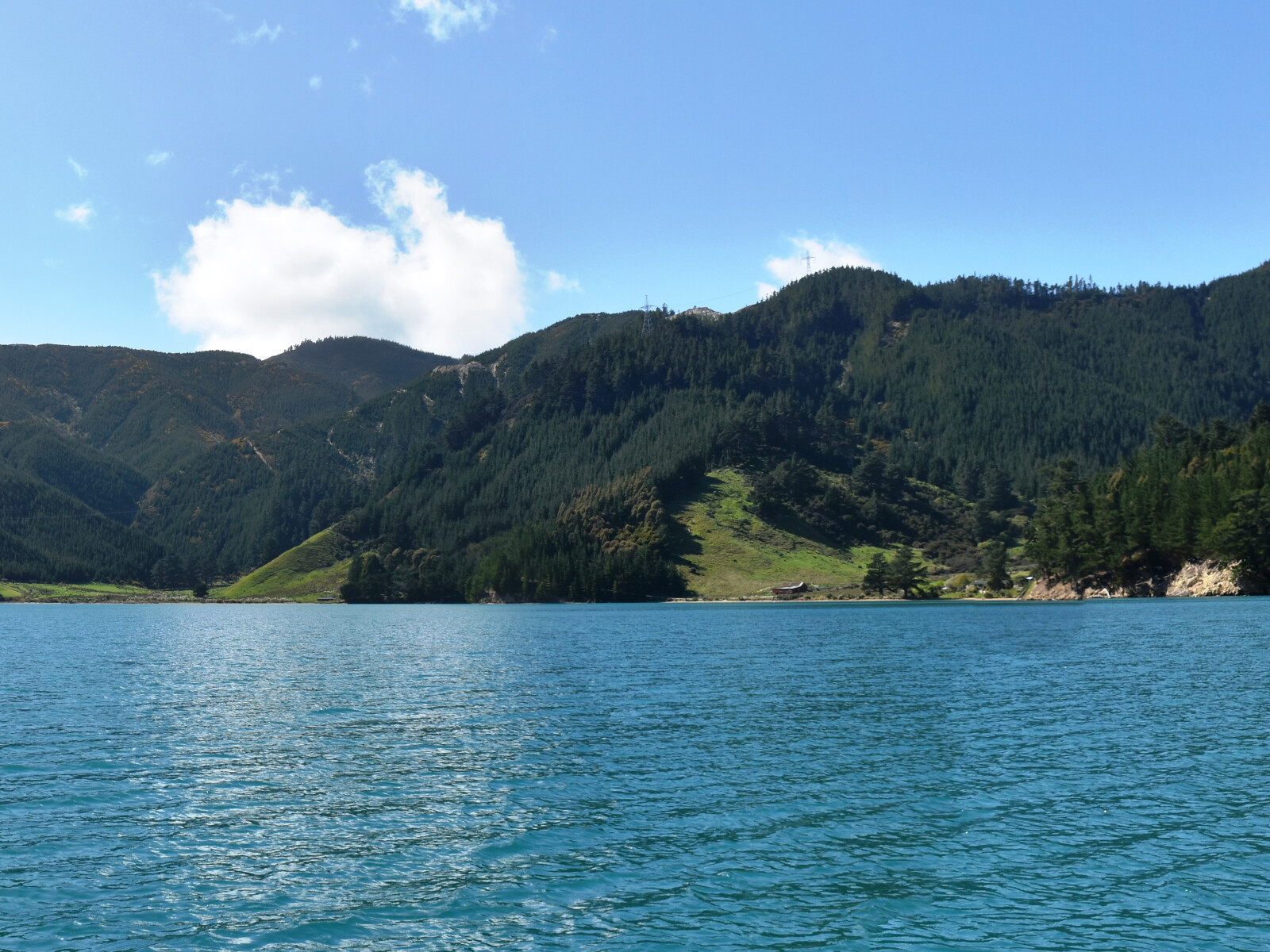The origin of this bay’s name is uncertain. It may refer to the dance or performance, the haka.1
Alternatively, it has been suggested that the bay’s name comes from the Moriori word for a wooden drinking vessel or coffin.
The Moriori language is now extinct. It developed on Rēkohu/Chatham Islands and has a close relationship to the Māori language.2
Archaeological surveys of the bay undertaken in the 1970s uncovered evidence of early Māori occupation in the form of pits and a greenstone/pounamu pendant.3
Since the arrival of Europeans, the bay has always been referred to in two halves, Swampy and Dry Hakana.
In 1909 Arthur Flood built a houseand a boat building facility in Swampy Hakana.
There was a school in the bay between 1913 and 1916.
In 1963 a submarine electricity cable was laid between the south and north islands. The southern terminal for the cable was located at Fighting Bay, a cove over the hill from Hakana Bay, on the outer edge of Port Underwood.
The access road to the Fighting Bay was built from Hakana Bay and the construction camp for the New Zealand Electricity Department was located in the bay.4
The construction of the submarine cable meant that access to Port Underwood needed to be improved. In the early 1960s a road was constructed along a bridal track from Rarangi to meet with the existing road at Hakahaka Bay.5
1. Roberts, W. H. Sherwood. “Maori Nomenclature: Maori Names of Places in the Provincial District of Marlborough,” Marlborough Express, Volume XXXVII, Issue 216, 12 September 1903, Supplement, accessed January 9, 2018, https://paperspast.natlib.govt.nz/newspapers/MEX19030912.2.58.2 .
2. James R. Eyles, Place Names of Port Underwood- a post European History (Picton: October Enterprises, 2002) 42.
3. Michael M Trotter, Port Underwood Archaeological Survey (Christchurch: Canterbury Museum, 1976) 7-8.
4. Loreen Brehaut, The Bays of Port Underwood (Picton: Picton Historical Society, 2012) 13.
5. Selwyn I Vercoe, Marlborough Will Shine Tonight: a History of the Marlborough Electric Power Board’S First Fifty Years, 1923-1973 (Blenheim: Marlborough Electric Power Board, 1973) 103.



